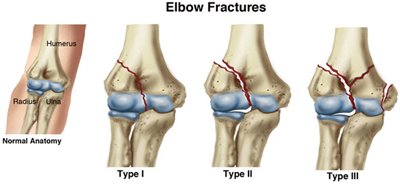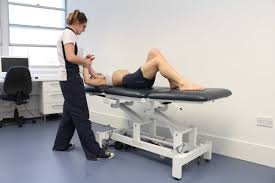nalco group
bone, muscle & joint pain physio
BOOK NOW / WHATSAPP ABOUT YOUR PAIN OR INJURY
- NOVENA 10 Sinaran Drive, Novena Medical Center #10-09, Singapore 307506
- TAMPINES 9 Tampines Grande #01-20 Singapore 528735
- SERANGOON 265 Serangoon Central Drive #04-269 Singapore 550265
Home > Blog > Physiotherapy & Hand Therapy > Conditions > Elbow Pain >Elbow Fracture Physiotherapy
Elbow Fracture Physiotherapy

An elbow fracture is a bone break (fracture) that occurs in the middle of the arm, in the area of the elbow joint.
Elbow fractures is mainly caused by trauma, such as
- falling on the elbow
- falling on an outstretched hand
- motor-vehicle accident
Unfortunately, an elbow fracture can happen to anyone.
Recent studies have identified a high number of fractures among children, women, and the elderly. Children have the highest rate of elbow fracture: 30 out of every 10,000 children in the United States are affected. Elbow fractures are diagnosed in 7.4 out of every 10,000 American adults, with lower-income adults also highly affected. Athletes also frequently experience elbow fractures.
Our senior hand therapists and physiotherapists design individualized treatment programs for people with elbow fractures that help
- improve elbow movement and strength
- ease swelling
- restore use of the arm for daily living and athletic activities
- prevent problems in other arm areas (hand, wrist, shoulder) that can occur when the elbow is immobilized in a cast or splint
What is an Elbow Fracture?
Elbow fractures are bone breaks (fractures) that can happen in any of the 3 bones in the area of the elbow joint (humerus, radius, or ulnar bones).
Often, patients will feel or hear a snap or pop in the elbow area at the time of the injury. An elbow fracture can happen from falling on or being hit in the hand, wrist, elbow, or shoulder. The elbow fracture can be a crack in the bone, a bone chip, or a more serious splitting (comminuted fracture) of the bones in the elbow.
There are 3 types of bone fractures:
- Type I. A "nondisplaced" fracture, where the bone has a break, but is still in its normal position.
- Type II. A fracture where a fragment of bone is shifted from its normal position.
- Type III. The most serious type of fracture, with multiple breaks of the bone.

Type I and II fractures usually are treated without surgery, but Type III fractures usually will require corrective surgery. Most of the time, normal healing for fractures take around 4 - 12 weeks (1-3 months, 3 being a safer duration of time), depending on their severity and on each affected individual’s general health.
Hand therapy and physiotherapy can help speed recovery from all types of elbow fracture, including those that require surgery.
How Does an Elbow Fracture Feel?
If you have an elbow fracture, you may experience:
- Moderate to severe pain. It’s usually too painful to move the arm.
- Tightness, stiffness, or cramping in the arm.
- Swelling, throbbing, redness, or numbness in the area.
- A grinding or catching sensation at the elbow.
- An unusual shape to the bones in the area (deformity).
- Tenderness to touch. The area also may feel hot.
- Numbness in the elbow, forearm, wrist, or hand.
If you experience sudden numbness and weakness in your forearm or hand after an elbow fracture, it could indicate nerve compression. See a doctor immediately!
How Is an elbow fracture Diagnosed?
If our senior hand therapist or physiotherapist suspects that you have an elbow fracture, we will refer you to an orthopedic doctor, who may order an x-ray. We can check for damage to other joints and muscles, and make sure that the nerves and blood vessels in your arm have not been affected by the broken bone.
In most cases, people with fractures consult a doctor with a specialty in managing bones and joints (orthopedist). Depending on the type of fracture, the physician might prescribe a cast or a sling, or, with severe fractures, surgery.
how our senior hand therapists and senior physiotherapists can help

After sustaining an elbow fracture, we will design an individualized treatment program to help improve your elbow movement and strength, ease swelling, and restore use of your arm for daily living and athletic activities.
While Your Elbow Is in a Cast or a Sling
While your bone heals, your arm will be in a cast or a sling to keep it still and allow healing. This is also the case if you have had surgery. During the healing process, it is important to prevent as much stiffness, weakness, or swelling as possible.
Depending on the amount of activity that is allowed by your physician for your type of fracture or surgery, we will prescribe exercises to keep your shoulder, wrist, and hand moving while you are in the cast or sling.
We will help you stay as independent as possible by teaching you how to perform your daily activities—such as dressing, working on a computer, housekeeping, and even exercising—while wearing a cast or a sling.
Under our senior hand therapists and physiotherapist’s guidance, you can exercise your other arm and legs to maintain and build your fitness level during the healing process.
When the Cast or Sling Is Removed
When your cast or sling is removed, your elbow will most likely be stiff and your arm will be weak, especially if you have had surgery.
We will help you prevent permanent loss of movement in the elbow, so don't delay your visit! Your therapist will examine your elbow and select treatments based on your particular physical problems, goals, level of physical activity, and general health.
We may prescribe the following elbow fracture hand therapy and physiotherapy treatments to help you:
Reduce Pain and Swelling
We may use different types of treatments and electrothermal modalities, such as specialized massage, electrical stimulation, and cold therapy to reduce pain and swelling.
Improve Your Ability to Move
We will choose specific activities and treatments to help restore normal movement in the elbow and arm. These might begin with "passive" motions that our therapist performs for you to gently move your elbow joint, and progress to active exercises and stretches that you do yourself.
Increase Flexibility
We may gently apply hands-on treatment (manual therapy) to enable your joints and muscles to move more freely with less pain. These techniques can include stretches and therapeutic massage techniques.
Increase Strength
If we finds any weakness in your arm or hand muscles, we will choose, and teach you, the correct exercises and equipment to steadily restore your strength and agility. You might use equipment, such as therapy bands, therapy putty, and hand weights to help strengthen your arm.
Improve Endurance
Restoring your arm's muscular endurance is important after an injury. We will develop a program of activities to help you regain the endurance you had before the injury, so you can return to doing the things that you like to do.
Return to Activities
We will discuss your activity goals with you and use them to set your work, sport, and home-life recovery goals. Your treatment program will help you reach your goals in the safest, fastest, and most effective way possible. We will teach you exercises, work retraining activities, and sport-specific techniques and drills to help you achieve your goals.
Speed Recovery Time
We are trained and experienced in choosing the best treatments and exercises to help you safely heal, return to your normal lifestyle, and reach your goals faster than you are likely to do on your own.
